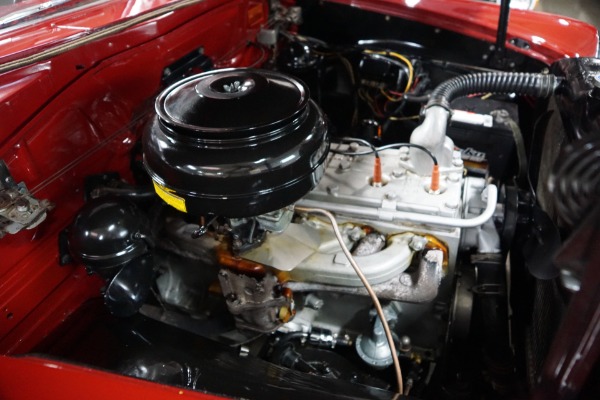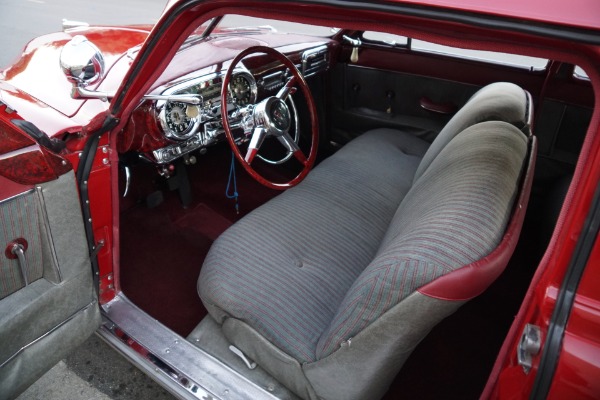The Hudson Pacemaker 2 Door Club Coupe: A Journey Through Time
Indeed, the Hudson Pacemaker 2 Door Club Coupe is a remarkable piece of automotive history. Its story unfolds against the backdrop of a dynamic and ever-evolving automobile industry, marked by innovation, competition, and the enduring spirit of American craftsmanship. In this 1000-word exploration, we will delve into the rich history of the Hudson Pacemaker, from its inception to its lasting legacy.

The Early Days of Hudson
The Hudson Motor Car Company, founded in 1909 by Joseph L. Hudson and eight business associates, emerged as a prominent player in the American automobile landscape. Chiefly, in its early years, Hudson gained a reputation for quality and innovation, thanks to the introduction of several groundbreaking technologies.
The Birth of the Pacemaker
The Hudson Pacemaker made its debut in 1946, following the conclusion of World War II. This was a significant period in the automotive industry, as manufacturers shifted their focus from wartime production to meet the demands of a civilian market hungry for new vehicles.
OUR 1951 HUDSON PACEMAKER
We proudly present a remarkable 1951 Hudson Pacemaker 2 Door Club Coupe, a rust-free beauty with an older restoration, featuring a single repaint as needed. It’s powered by the original 232 cu in Flathead 6-cylinder engine, mated to a 3-speed column shift transmission with factory Overdrive. Notable options include a ‘Weather Control’ heater ($64), radio & antenna ($84), and an electric clock ($17). Moreover, additionally features encompass fender skirts, twin Hudson spotlights, deluxe wide whitewall tires on deluxe hubcaps ($10), and trim rings ($13). Inside, you’ll find an 18″ two-spoke steering wheel, dual sun visors, front dome lamp, chrome rocker panel moldings, and an illuminated grille medallion & hood ornament. Obviously, this car exudes pride of ownership, having been part of a renowned collection for many years until recently acquired.
Design and Features
The Hudson Pacemaker showcased a sleek and modern design, characterized by its distinctive grille and elegant curves. Inside the cabin, the car offered comfort and convenience, a reflection of Hudson’s commitment to providing a top-notch driving experience.
Performance and Power of the Hudson Pacemaker
Under the hood, the Hudson Pacemaker featured a potent inline-six engine that delivered a satisfying balance of power and efficiency. This engine, known for its reliability, made the Pacemaker an attractive choice for a wide range of consumers.

Competition and Success
The automotive industry of the post-war era was highly competitive, with manufacturers vying for consumers’ attention. Obviously, the Hudson Pacemaker faced stiff competition from other American automakers. But its unique blend of style, performance, and affordability helped it carve out a niche in the market.
Innovations and Technological Advancements
Markedly, throughout its production run, the Hudson Pacemaker benefited from ongoing innovations and technological advancements. Significantly Hudson was at the forefront of introducing new features and engineering improvements that enhanced the overall driving experience.

Legacy and Cultural Impact – Hudson Pacemaker
Consequently, the Hudson Pacemaker left an indelible mark on American automotive history. It became a symbol of post-war optimism and a testament to Hudson’s commitment to quality and innovation. The car’s cultural impact extended beyond the automotive world, influencing fashion, music, and popular culture.
Designers and Visionaries
Behind the creation of the Hudson Pacemaker were a team of talented designers and engineers who worked tirelessly to bring the car to life. Their vision and dedication played a crucial role in shaping the Pacemaker’s distinct design and exceptional performance.
Challenges and Transformations
The automotive industry is no stranger to challenges and transformations. Over the years, Hudson, like many other automakers, faced its share of ups and downs. Economic shifts, changing consumer preferences, and shifts in the competitive landscape presented hurdles that required adaptation and innovation.
The End of an Era – Hudson Pacemaker
In 1954, Hudson merged with Nash-Kelvinator Corporation to form American Motors Corporation (AMC). This merger marked the end of the Hudson brand as an independent entity. Futher, while the Hudson Pacemaker and other Hudson models ceased production, their legacy continued to influence the future of American automobiles.
Conclusion: A Lasting Legacy
Moreover, the Hudson remains a cherished piece of automotive history. Its journey from the post-war era to its enduring legacy is a testament to the resilience and creativity of American automakers. The Pacemaker’s design, performance, and cultural impact solidify its place in the pantheon of classic cars. As we reflect on its history, we celebrate the spirit of innovation, craftsmanship, and innovation that defined the Hudson Pacemaker and the Hudson Motor Car Company.

